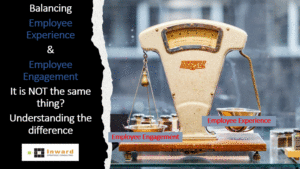When it comes to the success of a company, corporate culture and purpose play a crucial role. The way employees interact with customers directly correlates with the values and purpose embraced by the entire organization. Creating a culture-driven, high-performing, and engaged company starts with action, internal behavior, accountability, and effective internal communication.
It’s not enough for employees to simply repeat the company’s mission and vision statement like a mantra. True understanding and living of brand values require new behaviors and attitudes in customer interactions, product development, and business processes. Shockingly, recent research suggests that less than 50% of employees understand the brand idea, and even fewer know what to do about it. This poses a significant problem for brands seeking to create disruptive and innovative products and establish meaningful connections with their customers.
It’s essential to recognize that culture and brand are not separate entities. While many company leaders used to believe that culture was driven internally and brand was expressed externally, today’s reality demands a harmonious integration of employee cultures and brand values. Both must be aligned and understood to provide exceptional customer experiences.
Look no further than the cautionary tales of VW, BP, Uber, and Wells Fargo Bank to understand the consequences of a disconnect between brand values and culture. If employees had truly understood and embraced the brand values, these companies might have avoided the disastrous mistakes in the past that nearly destroyed their reputations. The loss of market share and brand reputation resulting from such incidents may take generations to recover, if ever. It is clear that a strong moral compass and shared values could have prevented these situations.
To establish transparency and alignment between internal culture and external brand values, every employee, from receptionists, the board members, to the CEO and chairman, must fully embrace the brand promise. Everyone should understand the company’s purpose and whom they serve. Defining culture and values requires narrative storytelling rather than relying on superficial perks like free candy or gym equipment.
Several elements of corporate governance contribute to defining purpose, brand values, and culture. It’s crucial to understand that these traits should be universal and embraced by all. Like any business process, they should be continuously improved, measured, and reported to individuals, senior staff, the board governance committee and, enabling them to evaluate their performance against personal and corporate KPIs.
Here are some recommendations from Inward on building exceptional internal cultures that reflect positive external brand value experiences for customers:
- Leadership Alignment: Culture and brand values should not be delegated solely to HR or marketing departments. Senior leadership committees need to take ownership and involve themselves in crafting values. They should evaluate and test these values against real-world situations to defend their decisions using their values. Leaders must model the values daily and constantly emphasize the company’s purpose, providing instant recognition and gratitude to employees who exhibit aligned behaviors.
- Articulate Purpose and Brand Values: Beyond pursuing profits, does your company have a mission that communicates why it exists? Do your mission and values identify the customers you serve? Ask your employees if they believe the company truly upholds its values in decision-making. Does the company’s purpose, if there is one, inspire them to do their best work? If not, there is work to be done in finding answers that motivate and inspire employees and build a strong brand culture.
- Demonstrate Alignment: Culture and brand values should not be considered secondary activities. Internal communications of purpose and brand values should be comprehensive and integrated, receiving the same level of attention as any other business process. Significant resources and budget should be allocated, and goals and impacts should be monitored through KPIs.
- Communicate the Cultural Vision: It is crucial to communicate the cultural vision and brand values throughout the organization. Equally important is ensuring that every individual understands how their role contributes to the cultural vision and values. Employees should see how their work supports the brand’s purpose and feel inspired to take action.
- Engage Employees: Cultural adoption comes through education, motivation, inspiration, onboarding, and engagement. Create employee contact maps and game boards to help employees understand the brand culture and how it aligns with the company’s strategy and their personal lives. Share stories of employees who exemplify the brand values in action to reinforce cultural adoption. Regularly engage with employees to foster a strong brand culture.
- Incorporate Brand Values into Daily Journey and Physical Environment: Brand values should serve as a moral compass to recognize and reward employees and customers alike. Reward employees based on embodying desired brand behaviors. Design the workplace intentionally to promote cultural awareness, such as creating spaces that encourage certain ways of working and providing clear messaging that reinforces brand values.
- Monitor and Measure Progress: Like any other business process, culture and brand values must be managed, measured, and reported. Monitor how people embrace and adopt new behaviors. Track engagement with internal social media and recognition platforms. Recognize and reward exceptional performance, and regularly report progress to highlight individuals or teams making a significant difference in cultural and brand value adoption.
A strong brand is built upon a company culture that engages employees, who then deliver on the brand promise to customers consistently. When brand values and culture are aligned, the company benefits from highly engaged customers and channel partners. Exceptional brand engagement leads to loyalty, premium pricing, and employee attraction and loyalty. This is when a company’s culture truly works for its brand.
We would be happy to share case histories and examples of our clients who have excelled at aligning the corporate culture with their purpose. Give us a call.

































